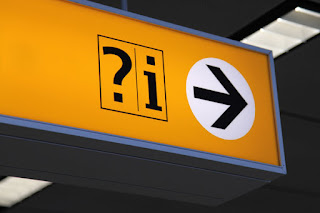What India Is, What It Is Not

The nation-building process and then the merger of states with the union—define what India is and what it is not
Why do people from some peripheral states have so many questions about India? It
is unimaginable, however, for the mainland people to even think about a little
resistance. Situation really changes perception. There has been a long narrative
in the history of India, consolidated with the arrival and departure of the
imperial rulers. The Sepoy Mutiny of 1857 is marked as the beginning of the
Indian nation formation. To cut it short, long after that war, political
consciousness was concentrated around the vast plains of the mainland. However
it could not penetrate a few regions, which were later occupied through
manipulation and intimidation. The two issues—first, the nation-building process
and then, the merger of states with the union—define what India is politically
and what it is not.
Without a doubt, there have been historical blunders. This only makes sense for
the uncomfortable questions that India has been facing; though it is entirely
another issue how much these questions affect the national polity by virtue of
nationalism or a group of populous people of the same race group. The
government would mind admitting it too. These have created a room for resistance
and scepticism. The ready-made answers from the union government have always
been the natives’ lack of loyalty and the problem of regionalism. Generosity has
suddenly become a mass attitude.
The natives must take the responsibility for diving into a collective mess. However, the authority is equally to be blamed for the fallacious issues of nation-states in the country. The rise of insurgency is the obvious reason; howsoever the problem is ascertained to unemployment, law and order situation, and so on. It is a shame to ignore the pulse of the people, even after all these decades of sovereign rule and disorder. If the government is hell-bent on building the nation, then every word is hogwash here.
Everything is about no matter what, creating nationalism. Ignore or not, nationalism remains a subjective term. Each power player is defining all the terms related to the centre and state, from their own frame of references. So the opposing conflicts are self-explanatory. That’s the reality we cannot neglect. This also shows where the nation formation stage stands presently.
So what now? Insurgency has been the trademark of failed states like Manipur. The long years of conflict have probably made everyone more matured. On the ground, however, there has been only negligible change, despite the probable chance of the government and the rebels to know each other better. It might be because of the lack of communication between the government and the strugglers. If not, there are some deep implications, which will keep the people out of their comfort zone. It is a tragedy if the power players are always resorting to the same old agenda. After all these years of bombs and bullets, there has to be new approaches and developments. It looks like a wrong presumption that time has made us more mature.

|
|
The road is leading nowhere from here Image from publicdomainpictures.net |
In the backdrop of these grave situations, by documents, we are the citizens of
a country. On one hand, we are making clarion calls for recognition, to accept
us by the ‘real’ Indians. The country is just a farce, on the other—when looking
at the ground realities, the rules of law are unabashedly flouted. The
lawbreakers include everyone, right from the head of the government to the
people in the lowest strata of the society. There is no reason why the country
should not be dissected and defined. Fundamentalists, rightists and puritans of
the nation might see holes in this argument, but when they talk about India, we
are also a part, even if we are in complete chaos. So a large chunk of what a
India is also lies listlessly in that disorder. This gives us equal voice,
though our articulation is only as good as appearing for the top civil exams and
conforming to the norms at best. Sixty-three years of blind existence is the
proof.
We Watch America, Ignoring Manipur, 25 November 2012
Union Of India Is A Semantic Charade, by Garga Chatterjee
Barack Obama got four more years. Desis watched his victory speech. USA may or may not have four more years of hope, but that week in early November also marked 12 years of hopelessness in a part of another Union, the Union of India. Irom Sarmila Chanu, the Gandhi that Gandhi never was, finished 12 years of her epic fast, protesting acts of torture perpetrated in Manipur by the armed forces loyal to the Indian state, in the cover of the Armed Forces Special Powers Act (AFSPA).
(Source: Kasmir Times)
A mainland human on the street would get pissed off if he hears anything against
India. When you imagine India, how many people are included in your
visualisation of what the country is? Folks, that’s a serious problem. The issue
inches towards sheer absurdity when they don’t know, or don’t even care about
what India is made of but only what India is. Isn’t it a wonder, for them there
is a cry for Mother India and for us, an eternal blare for nationality and
belongingness? This does not mean each one of us has this question. There are
groups of people fighting for self-determination and who believe they have
nothing to do with this phony whole.
We are required to prove we are India but the problem is that we cannot find a
proof, except showing ourselves in the political map, and identifying ourselves
in the educational and professional certificates. Passports, driving license and
so on. This is not about disloyalty or losing ourselves in the scourge of
territorial and ethnic clashes, which again is a made of New Delhi. Instead this
is about lies, legalised terror, state apathy and a group of disillusioned
people. There is no room here for nationalists and patriots. We live in a global
village. The fact is that even if you don’t question about these things, there
are doubts everywhere. We have come a long way from colonial era, now we need to
drop the defunct ideas and pick up fresh ones.

|
| Image from publicdomainpictures.net |
Further Reading
by Patrick J. Buchanan
The nation-state is dying. Men have begun to transfer their allegiance, loyalty and love from the older nations both upward to the new transnational regimes that are arising and downward to the sub-nations whence they came, the true nations, united by blood and soil, language, literature, history, faith, tradition and memory.
by Hannes Lacher
The critique of state-centrism is a crucial aspect of the restructuring of International Relations theory, widely seen as a precondition for the conceptualisation of international transformation
by Natalia Piskunova
...(there is a) gradual decline of the state as the only authoritative player on the international relations and security chessboard. A shift in focus is evident since the classic domain of state prevalence – security – is now likely to fall into the hands of new actors.
Featured image (top) by Bridgette Glogster


Comments
Post a Comment